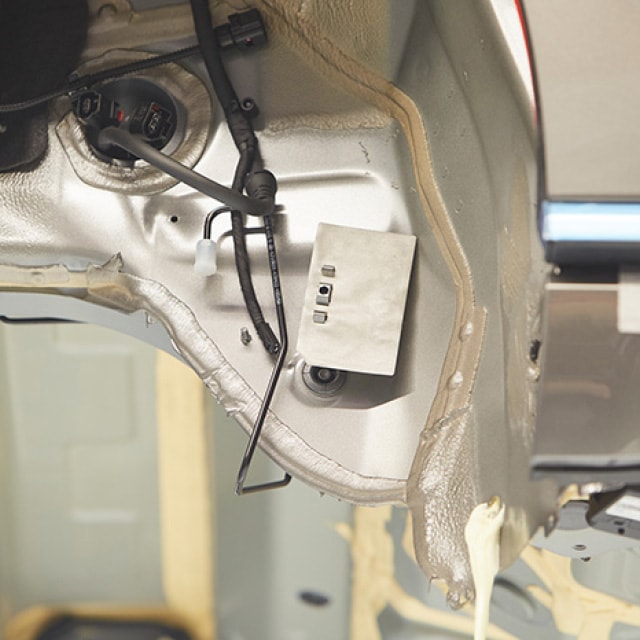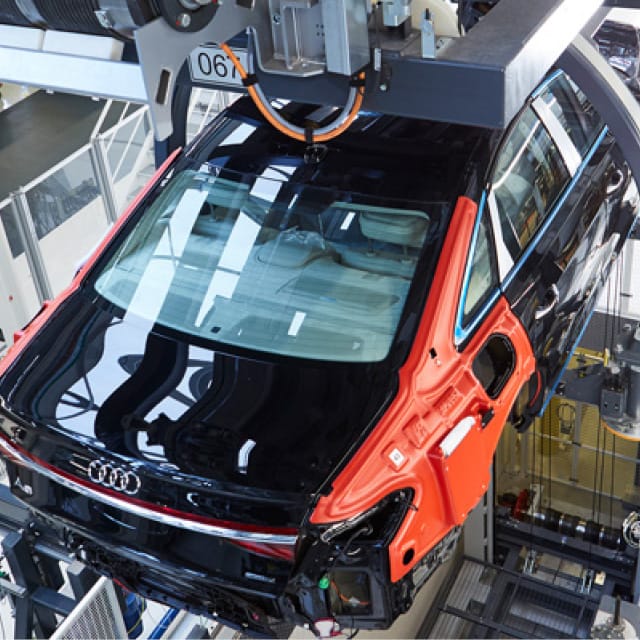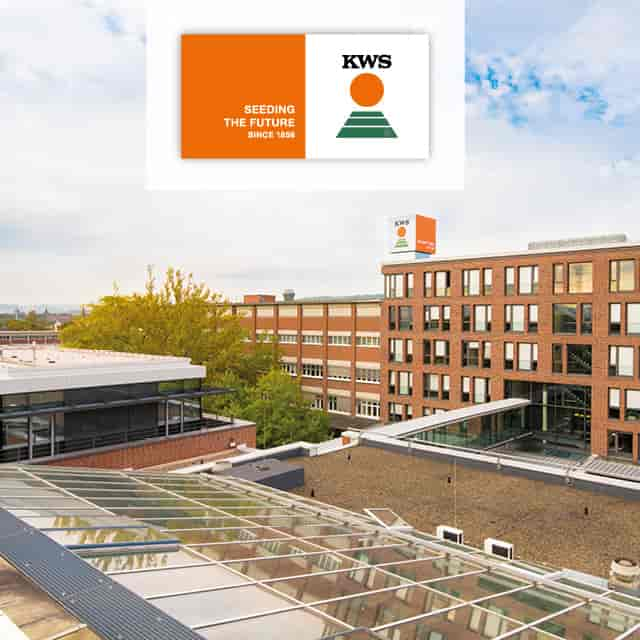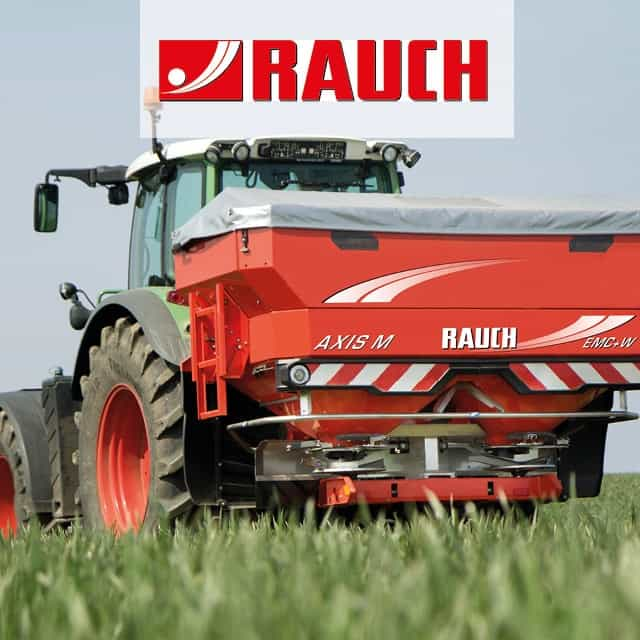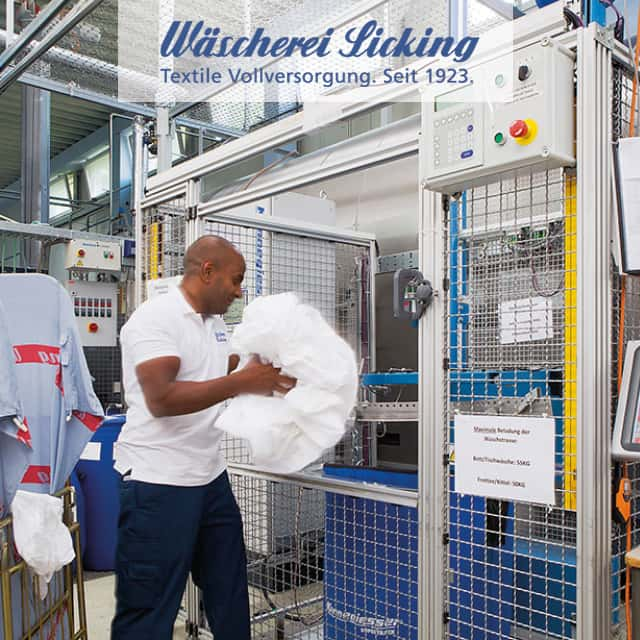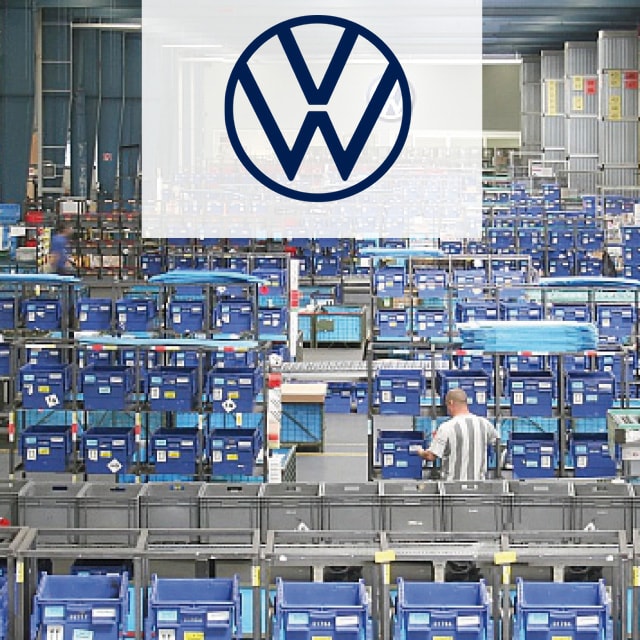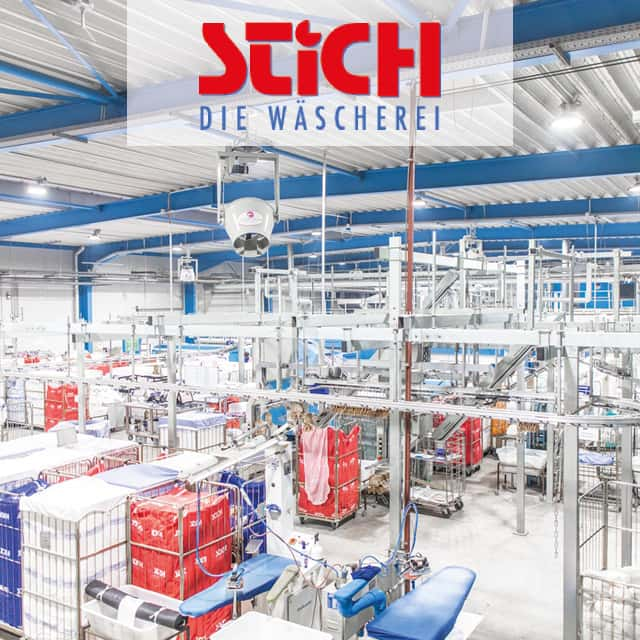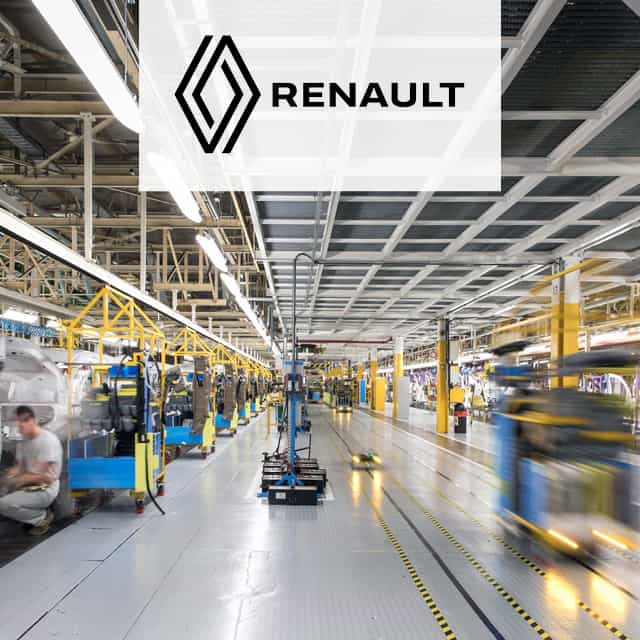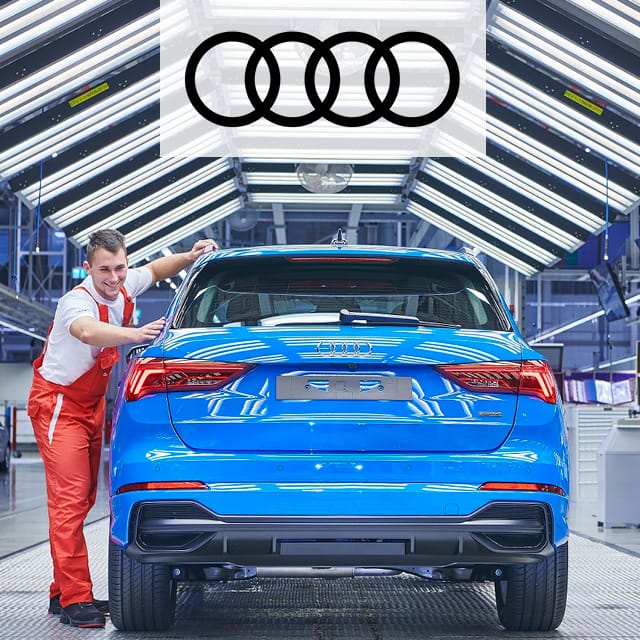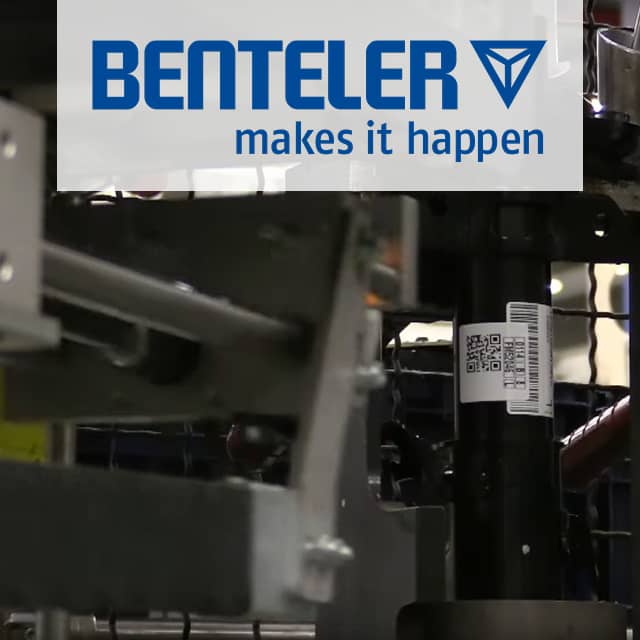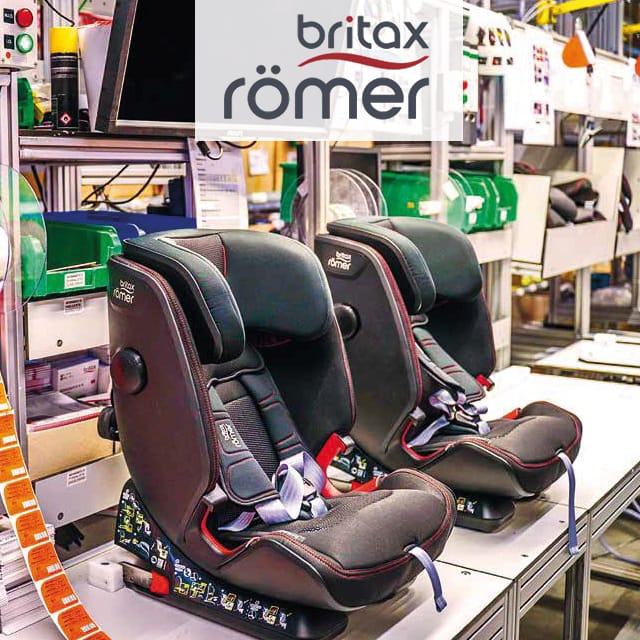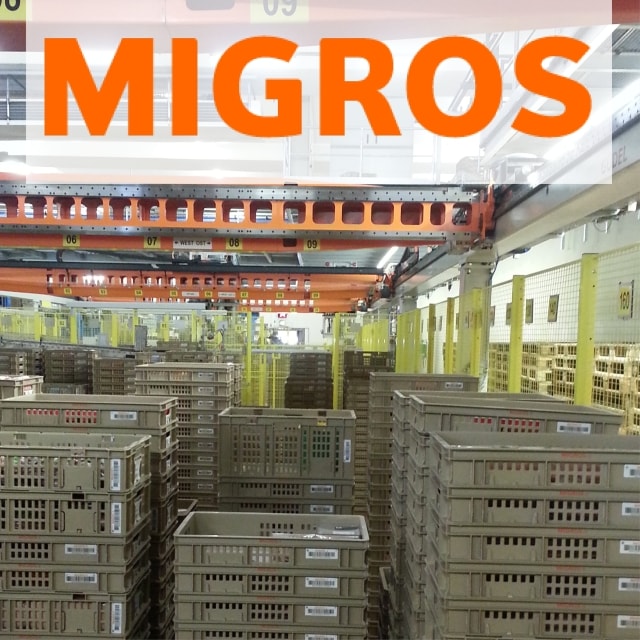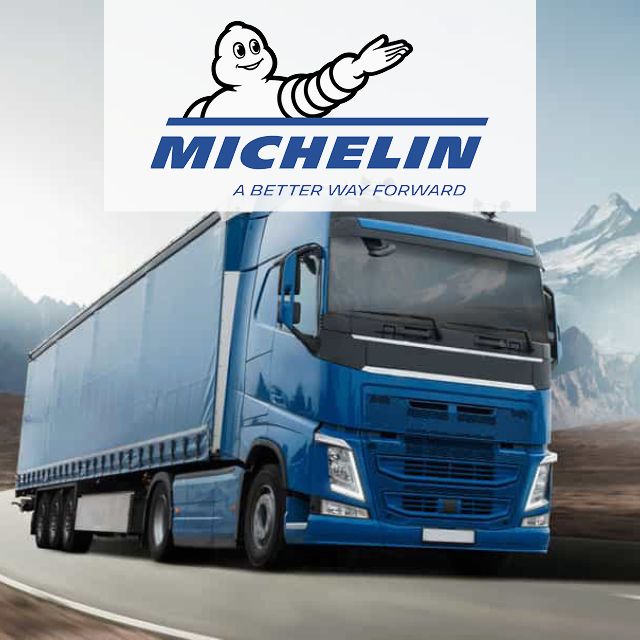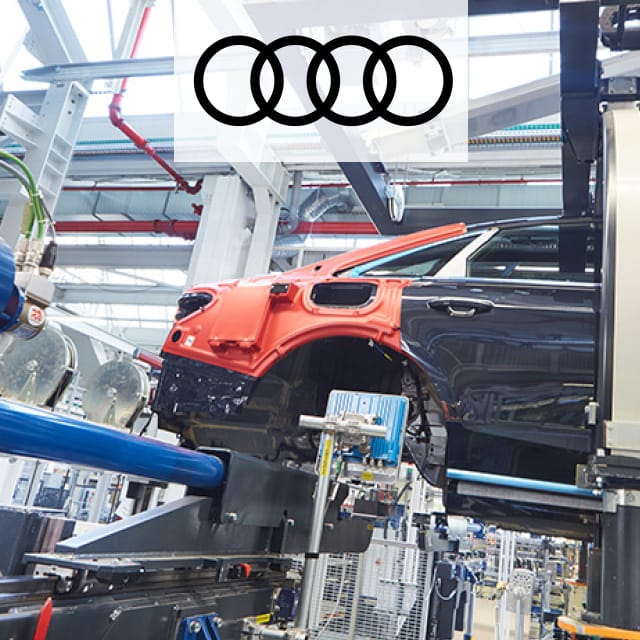
UHF RFID in the Production of the Audi A8
In the production of the Audi A8, every production step is controlled via UHF RFID.
Passive UHF RFID labels identify each A8 body produced in Neckarsulm and support the production of individually configured vehicles until completion.
At the Neckarsulm site, around 10,000 employees produced almost 190,000 vehicles of the Audi series A4, A5, A6, A7, A8 and R8 and their derivatives in 2018.
Process Requirements
Customers can configure the Audi A8 individually. From body construction to completion of a vehicle, the realization of every customer-specific production order must be 100 percent guaranteed.
During the production process, the vehicles are exposed to strong external influences - intense heat and strong chemicals. The temperatures in the paint shop reach up to 230 degrees circulating air. In the cathodic dip painting process, the vehicle is completely immersed in a tank with an acid/base mixture.
Objective
- Seamless identification of every Audi A8 at all relevant production and assembly points
- Individual vehicle identification must withstand the harsh production conditions
- Uniform data overview of the entire process and all operations
Solution
The identification is carried out via single-use RFID labels in business card size. The labels are made of Nomex material to protect the inlays from heat, chemicals, and other production influences. The labels are affixed on the main chassis beam in the car body construction process. The start of the construction process marks the time when a vehicle receives an order number.
The highest degree of individualization between the vehicles is created in the assembly process. There is a very high degree of variance here. UHF RFID reading technology is installed at each production step to uniquely identify each vehicle as it is created and compare it with the production order.
An app-based configuration integrates the reading points directly into the MES system. Without an additional middleware, a platform- and manufacturer-independent, service-oriented architecture framework such as OPCUA is implemented. Reading point reprogramming is possible without changing system settings.
The RFID readings are linked to a conveyor stop. If the RFID identification of a vehicle fails at any one point, the production line stops. This way, Audi ensures that no vehicle leaves a station without identification.
The RFID label is removed during final assembly, as it contains sensitive production data.
Advantages
- Each vehicle is automatically and uniquely identified across all factories.
- Avoidance of production interruptions
- 100 percent availability of RFID technology is guaranteed
- Ensuring consistent data quality at every station
- Comparable reading situations are the basis for trend analyses and proactive action
- App-based integration reduces time required for commissioning RFID reading stations
Learn More
Questions? Get in contact with the editorial team!
Technologies
Application Fields


